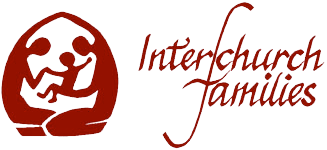Visit to the Pontifical Council for Promoting Christian Unity
Visit to the Pontifical Council for Promoting Christian Unity (PCPCU)
We are delighted today to have this opportunity to thank the Pontifical Council for Promoting Christian Unity, and the Secretariat for Promoting Christian Unity before it, for the encouragement and support you have given to interchurch families over the past forty years.
Before the Second Vatican Council mixed marriages between Roman Catholics and other Christians were forbidden by the Roman Catholic Church unless both partners made promises that were seen by other churches as violating the rights of their members. Mixed marriages were seen as a cause of conflict between the churches, and therefore as a major hindrance to Christian unity.
As early as 1920 the Ecumenical Patriarchate in Constantinople had listed mixed marriages among the questions that needed ‘settlement between the various confessions’. Dr Visser t’Hooft, General Secretary of the World Council of Churches, stated in 1963 that the ecumenical reality of the Second Vatican Council would be judged by two things. One of them was the removal of the canonical difficulties for Christians of other communions marrying Roman Catholics (Report to the Executive Committee of the WCC, 12 February 1963). Towards the end of the Council, the subject was referred to the Pope as one of pastoral urgency on which the Council had not had time to come to a common mind. This was an exceptional occasion on which a large number of the Observers from many different churches and confessions spoke together. Their joint statement on the subject of mixed marriages between baptised Christians was conveyed directly to Pope Paul VI by the Secretariat for Promoting Christian Unity.
The papal motu proprio Matrimonia Mixta was issued five years later in 1970. It brought in legislative changes the positive significance of which was not at first fully appreciated by other churches. It also put forward a less negative view of mixed marriages. It did so in the characteristically understated way by which the Vatican heralds radical change. It said that ‘mixed marriages … do not, except in some cases, help in re-establishing unity among Christians.’ Most Protestant readers, unschooled in Vatican ways, failed at first to detect the positive smuggled in under cover of the negative.
Pope Paul VI spelled this out more positively in his encyclical Evangelii Nuntiandi of 1975. ‘Families resulting from a mixed marriage also have the duty of proclaiming Christ to the children in the fullness of the consequences of the common baptism;’ he wrote. ‘They have moreover the difficult task of becoming builders of unity.’
Pope John Paul II was even more explicit in Familiaris Consortio of 1981. ‘Marriages between Catholics and other baptised persons … contain numerous elements that could well be made use of and developed … for the contribution they can make to the ecumenical movement. This is particularly true when both parties are faithful to their religious duties.’
We know and appreciate how much this development owes to the Pontifical Council for Promoting Christian Unity and the Secretariat before it. We think of an example from 1980. The first English-speaking international conference wrote to the Synod of Bishops called in that year to discuss marriage and family life. Cardinal Willebrands made a powerful plea on behalf of interchurch families at that Synod. His intervention clearly influenced Familiaris Consortio and later documents. We are particularly grateful for the Pontifical Council’s work on mixed marriages in its pastoral application of Catholic norms on ecumenism in its Directory of 1993.
Today we come to you from the Second World Gathering of Interchurch Families, with representatives from eleven different countries. Our first multilingual World Gathering was held at Geneva at the Ecumenical Centre in 1998, when we were privileged to welcome Bishop Pierre Duprey and Dr Konrad Raiser and to hear their addresses.
But the coming together of interchurch families for mutual support goes back to the early 1960s when groups of foyers mixtes began to meet in France. Groups, associations and networks of interchurch families were formed in many European countries during the 1960’s and 1970’s. Associations in North America and Australia developed in the 1980’s and 1990’s. A common motivation in these groups has been a concern to promote Christian unity. This is reflected in the title of our Gathering: United in baptism and marriage: interchurch families called to a common life in the Church for the reconciliation of our churches.
Interchurch families from many countries of Europe, from North America and from Australia are represented here. There are those from Africa and Asia who would have liked to come, but sadly were not able to obtain visas. The thoughts and prayers of many other interchurch families around the world are with us as we meet in Rocca di Papa.
We believe that as interchurch families we have a significant and unique contribution to make to our churches’ growth in visible unity. We have been greatly encouraged when our churches have seen us not as problems but as pioneers of Christian unity. As two Christians united in baptism, but members of two different, and as yet separated Christian traditions, we have come together in the covenant of marriage to form one Christian family in our home. As we grow into our unity as a couple and family, we begin and continue to share in the life and worship of each other’s church communities. We develop a love and understanding not only of one another, but also of the churches that have given each of us our religious and spiritual identity, and we share that love and understanding with our chuildren. In this way interchurch families can become both a sign of unity and a means to grow towards it. We believe that interchurch families can form a connective tissue helping in a small way to bring our churches together in the one Body of Christ.
We have set down on paper how we see ourselves and our role in the movement for Christian unity. We have it here in four languages, and we give you a copy for the Pontifical Council. We shall be pleased if you are able to consider it and to respond to it. A small representative group of interchurch families would be happy to discuss it with members of the Pontifical Council at a mutually convenient time.
We would like to express our good wishes and our prayers for the Council in all its work to promote Christian unity.
Presented by Canon Martin Reardon

